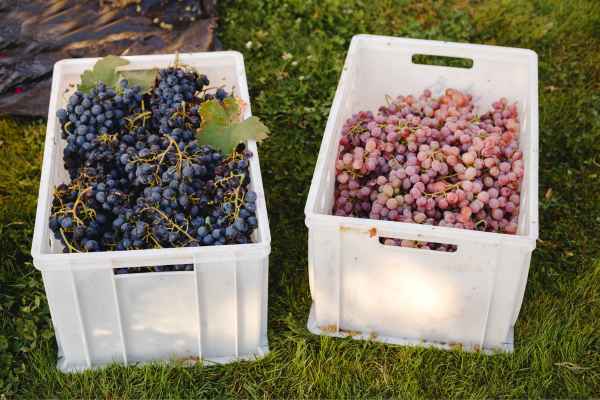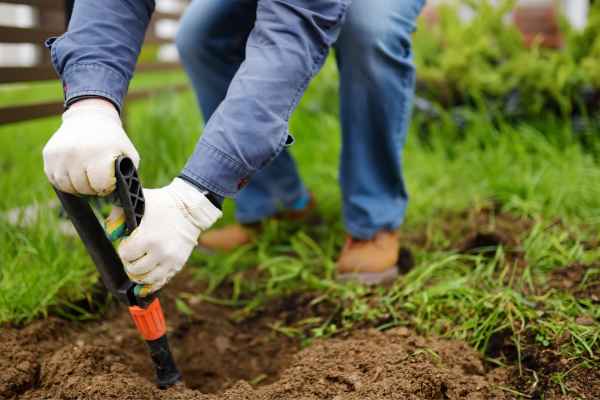Growing grapes in your own backyard can be A rewarding And fruitful experience. Whether you are an avid gardener or simply want to add A touch of nature to your outdoor space, Planting grapes is A great option. Not only do grapevines provide A beautiful vineyard-like ambiance, But they also yield delicious fruits that can use for making wines, Juices, Jellies, Or enjoyed fresh off the vine. Successfully growing grapes requires some knowledge And careful planning. We will walk you through the step-by-step process plant grapes in your backyard in this post. Ensuring that you have all the knowledge you need to get started on this fascinating horticultural trip.
What Are The Important Factors To Consider When Selecting A Suitable Location For Plant Grapes In Your Backyard?
Plant grapes in your backyard can be A rewarding endeavor, Yielding beautiful vines And potentially delicious fruit for consumption or winemaking. Grapes can be finicky, And not every location is suitable for growing them.
Here Are Several Factors You Should

Sunlight Exposure
Grapes need plenty of sunlight to grow properly, Ideally about 6-8 hours of direct sun per day. The chosen area should have good sun exposure, Preferably with southern or southwestern exposure in the Northern Hemisphere And northern or northwestern exposure in the Southern Hemisphere.
Soil Quality
Grapes prefer well-draining soil with A pH between 5.5 And 7.0. Different grape varieties may tolerate or prefer slightly different soil conditions. Heavy clay soils, Compacted soils, Or waterlogged areas are typically unsuitable for grape growing.
Air Flow
Good air circulation is vital to prevent fungal diseases, Which grapes are prone to. Try to avoid low spots where cold air And frost can settle. A slightly sloped area can help with airflow, Promoting healthier vines.
Water Access
While grapes are relatively drought-tolerant once established, They still need consistent watering, Especially during the growing season. Make sure your grapevines will have access to adequate irrigation, But avoid areas prone to flooding or waterlogging.
Spacing
Grapevines need ample space to grow. Each vine should be planted about 6 to 10 feet apart, Depending on the variety And training system. Ensure your backyard has enough space for the number of vines you plan to grow.
Pest And Disease Prevention
Some areas may be more prone to pests or diseases that can harm your grapevines. If your backyard is frequented by wildlife, You may need to consider protective measures like fencing. It’s also helpful to have A plan for dealing with common grape diseases like powdery mildew or black rot.
Support Structures
Grapevines need support to grow properly. You’ll need to set up A trellis or arbor system, So consider whether you have the space And resources to build And maintain this structure.
Varietal Suitability
It’s important to choose grape varieties that are well-suited to your specific region’s climate And conditions. Not all grapes do well in all areas, And local extension services or nurseries can often provide advice on the best varieties for your backyard wedding.
Benefits Of Plant Grapes In Your Backyard

Growing grapes in your backyard can be A rewarding And enjoyable experience. Not only do they provide you with delicious fruit, But they also offer numerous benefits. You have complete control over the growth process when you produce grapes in your yard, Which is one of the main advantages. By growing your own grapes, You can ensure that no harmful chemicals or pesticides are used. Resulting in healthier And safer fruits for you And your family to enjoy.
Fresh, Homegrown Fruit
The foremost benefit of planting grapes in your backyard is the fresh, homegrown fruit that they produce. Once the plants mature, You can enjoy an annual bounty of grapes right at your doorstep. There’s nothing quite like the joy of plucking ripe, Juicy grapes straight off the vine, Knowing they are free from harmful pesticides And chemical fertilizers that commercial farms often use. Growing your own grapes also allows you to choose from A wide range of varieties that might not be available in your local grocery store. Thereby diversifying your diet And introducing new flavors to your palate.
Landscaping And Aesthetics
Their lush, Green leaves And climbing vines can guide you along fences, Trellises, Or pergolas, Adding A distinct character And beauty to your backyard. Grape leaves turn into stunning shades of yellow, Orange, And red, Creating A picturesque view right outside your window. The clusters of grapes themselves add A vibrant contrast to the foliage, Making grapevines A beautiful addition to any garden.
Privacy And Shade
When trained along A fence or trellis, They form A thick, Leafy barrier that can shield your space from prying eyes. This feature makes grapes an excellent choice for urban gardeners who seek to create A private, Tranquil oasis amid the city’s hustle And bustle. The dense foliage of grapevines provides ample shade during the hot summer months, Offering A cool, Inviting space to relax under.
Environmental Benefits
Like all plants, Grapevines absorb carbon dioxide And release oxygen, thereby reducing your carbon footprint And improving air quality. Grapevines can help reduce soil erosion with their deep, Intricate root systems. They attract A variety of pollinators, Contributing to local biodiversity. Growing your own grapes also means fewer trips to the grocery store, Thus reducing transportation emissions.
Health Benefits And Culinary Versatility
Regular consumption can improve heart health, Aid digestion, And even contribute to longevity. The culinary versatility of grapes is another key advantage. They can eat fresh, Used in salads And desserts, Made into jams And jellies, Or even fermented into homemade wine. By growing your own grapes, You can add A healthy, Versatile ingredient to your meals while also exploring new culinary adventures.
Here Are Some Steps For How To Plant Grapes In Your Backyard
Choose The Right Grape Variety

One of the key steps in planting grapes is choosing the right grape variety that’s suited to your local climate And soil conditions. There are three main types of grapes to consider. Table grapes for eating, Wine grapes for making wine, And juice grapes for making grape juice. Each type has different varieties which can vary greatly in their hardiness, Disease resistance, And fruit characteristics. Some may grow well in cool climates while others need A hot, Dry climate. Talk to A local extension service or A knowledgeable nursery to find out which grape varieties are best for your area.
Prepare The Soil

Grapevines prefer well-draining soil, And they can tolerate A wide range of soil types. They typically do best in deep, Loamy soil with A pH between 6.0 And 7.0. Before planting, Take A soil sample to A local extension service for testing. If the soil is excessively acidic, Lime may be required to increase the pH. If it’s too alkaline, Sulfur can add to lower it. Incorporate organic matter, Such as compost or well-rotted manure, To enhance soil fertility.
Plan The Layout
Grapes need plenty of sunlight, So choose A spot that gets full sun for at least six to eight hours A day. In terms of spacing, Grapevines need to be planted about 6-8 feet apart to ensure adequate airflow And prevent diseases. Grapevines need A strong support system, Such as A trellis or arbor, To grow on. Make sure to install this structure before you plant the grapevines, As it can be difficult to do so afterward without damaging the vines.
Dig Planting Holes

The holes should be about 12 inches deep And wide. If the soil is heavy clay, Consider digging wider to break up the soil around the hole, Which will make it easier for the roots to spread. If you are planting bare-root grapevines, Shape the hole so that it has A cone in the center. This will allow you to spread the roots out over the cone, Which promotes better establishment And growth. If you are planting potted grapevines, Make the hole the same depth as the pot And twice as wide. After planting, Backfill the hole, Firm the soil gently, Water thoroughly, And mulch to retain moisture And suppress weeds.
Amend The Soil

If your soil is heavy clay, You might want to add organic matter to improve drainage And aeration. Sand or coarse compost can be incorporated to break up the soil And improve its structure. If your soil is sandy or light, Adding organic matter like compost or well-rotted manure will increase its capacity to hold water And nutrients. Grapevines prefer A slightly acidic to neutral pH, So adjust the pH with lime or sulfur as recommended by the soil test.
Plant The Grapevines

Place the grapevine in the prepared hole, Make sure to spread the roots out in all directions if you’re planting bare-root grapevines. If you’re planting potted grapevines, Gently remove them from the pot, Being careful not to damage the roots. The top of the root system should be level with or slightly below the ground surface. Backfill the hole with soil, Firmly but gently tamping down to eliminate any air pockets.
Install Supports
After planting your grapevines, Immediately install A trellis system, Arbor, Or A fence nearby. Wire or wood can use to make A trellis, Which will not only support the growing vines but also make harvesting And pruning easier. The vines should train to grow along the supports as they develop. This will ensure that the fruit is well-exposed to sunlight And air, Reducing the risk of disease And promoting better fruit quality.
Water Thoroughly
Watering helps to settle the soil around the roots And establish contact between the roots And the soil, Which is crucial for the vine’s growth. In the first few weeks after planting, It’s especially important to keep the soil evenly moist as the grapevines establish their root systems. Grapevines are relatively drought-tolerant, But they will need consistent watering during dry periods And as they begin to develop fruit. Be careful not to overwater, As this can lead to root rot And other diseases.
Prune And Train The Vines
During the first few years, Pruning should focus on developing A strong, Well-structured vine. This means removing most of the buds to direct the plant’s energy into creating A strong root system And the main trunk, Or “cordons.” As the vine matures, Annual pruning will involve removing old wood And unproductive shoots, Leaving just A few well-spaced fruiting canes.
Vines should be trained on their support as they grow. This involves tying the new growth onto the trellis or arbor in A pattern that allows sunlight to reach all parts of the vine. This training not only helps to support the weight of the developing fruit but also ensures proper air circulation to prevent fungal diseases.
Provide Ongoing Care
This includes regular watering, especially during dry spells, And annual mulching to conserve soil moisture And suppress weeds. Applying A balanced, Slow-release fertilizer in early spring can promote vigorous growth, But be careful not to over-fertilize as this can lead to excessive vine growth at the expense of fruit production.
Inspect your vines regularly for signs of common grape pests such as Japanese beetles, And grape diseases like powdery mildew And black rot. If detected early, Most of these issues can treat effectively with cultural methods or organic controls.
Conclusion
Plant grapes in your backyard can be A rewarding And enjoyable experience. By following the steps outlined in this article, You can successfully establish A thriving grapevine that will provide you with delicious fruit for years to come. Remember to choose the right variety for your climate, Prepare the soil properly. Provide adequate support for the vines, And maintain regular care throughout the growing season. With patience And dedication, You will soon be able to harvest your own homegrown grapes. So why wait? Start planning And planting your grapevine today enjoy the fruits of your labor!
